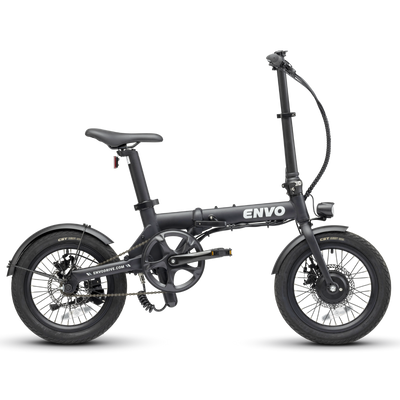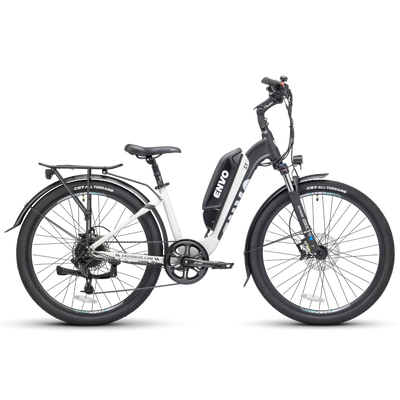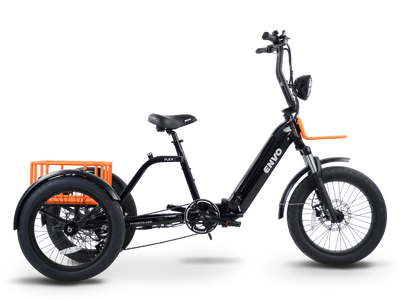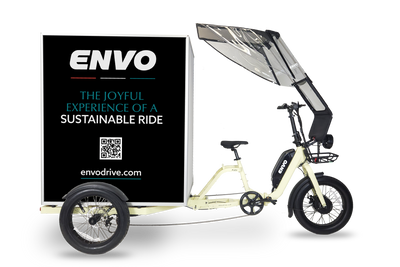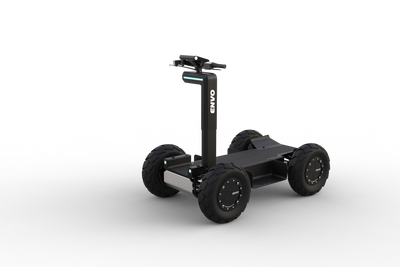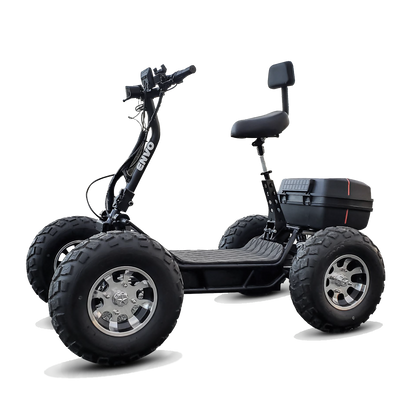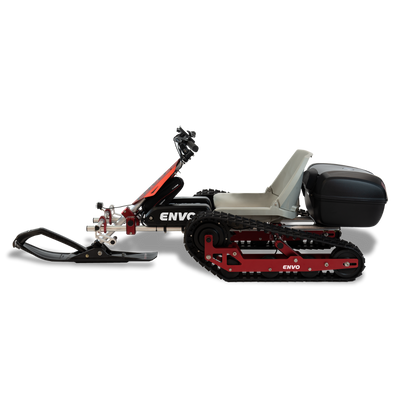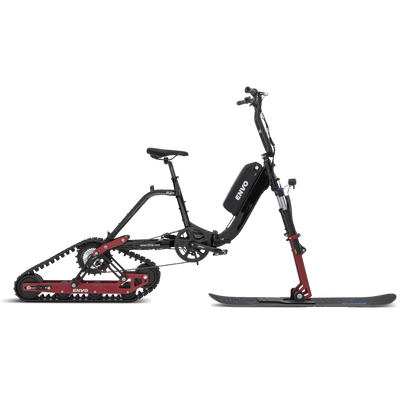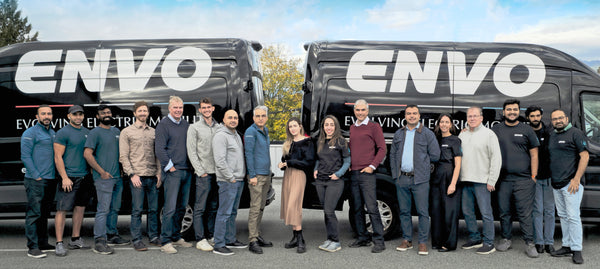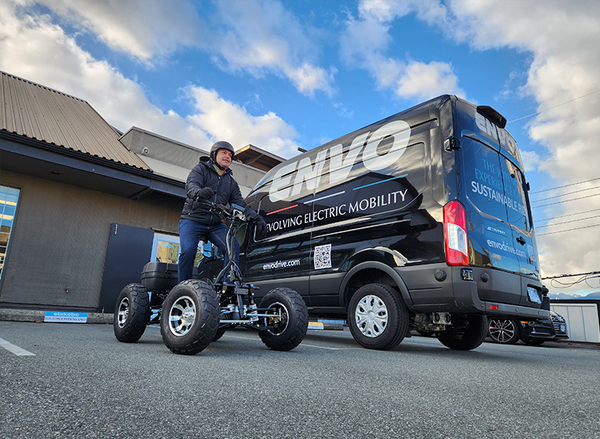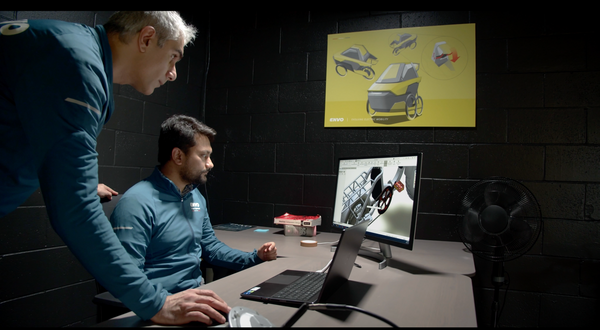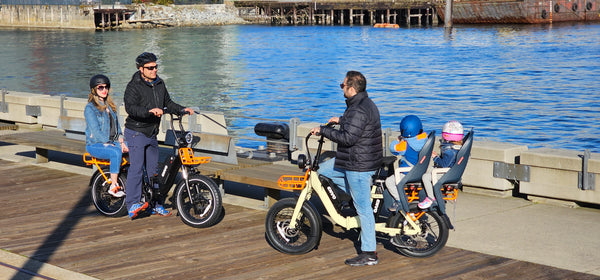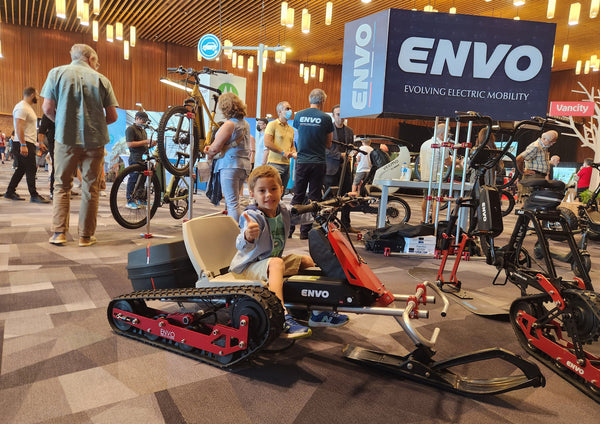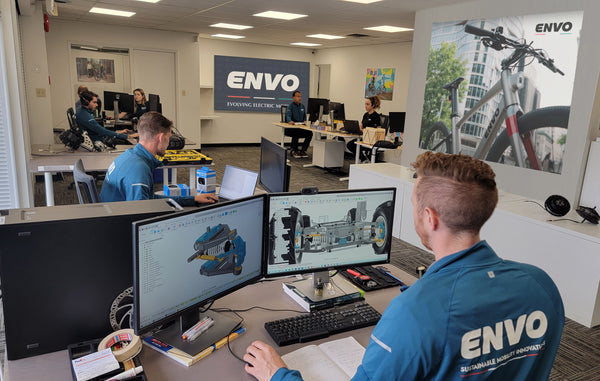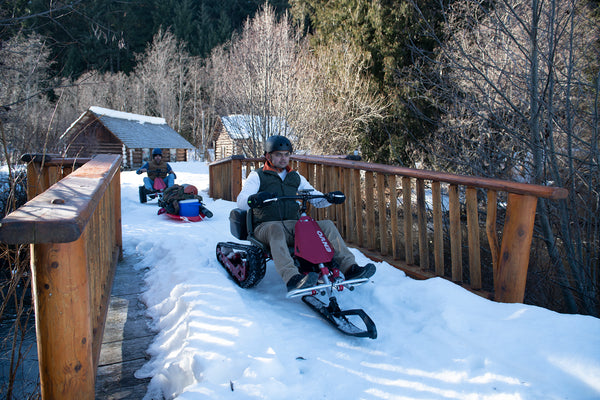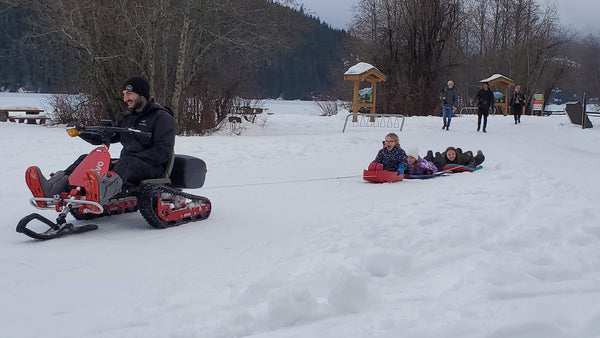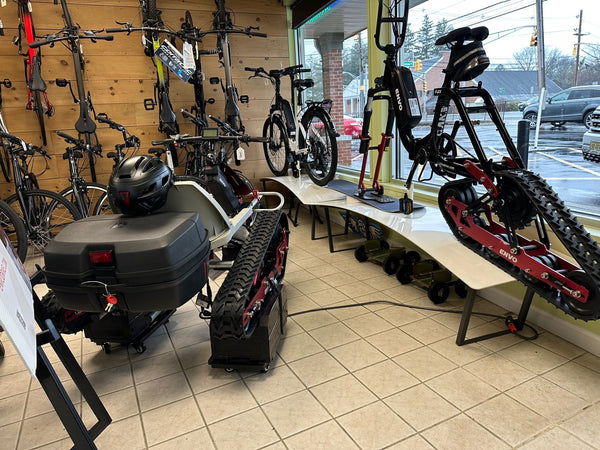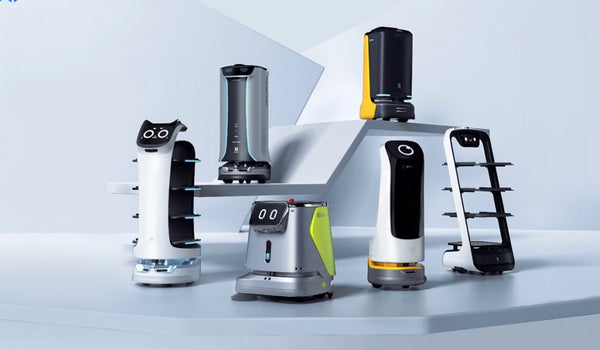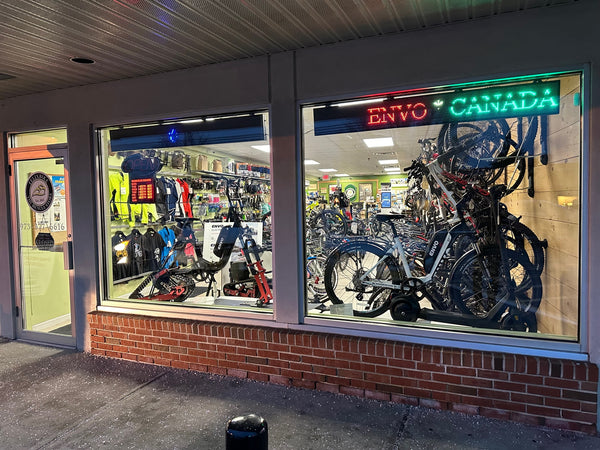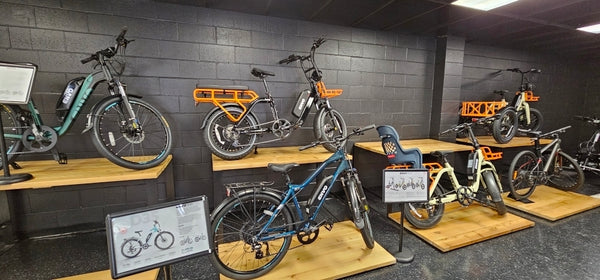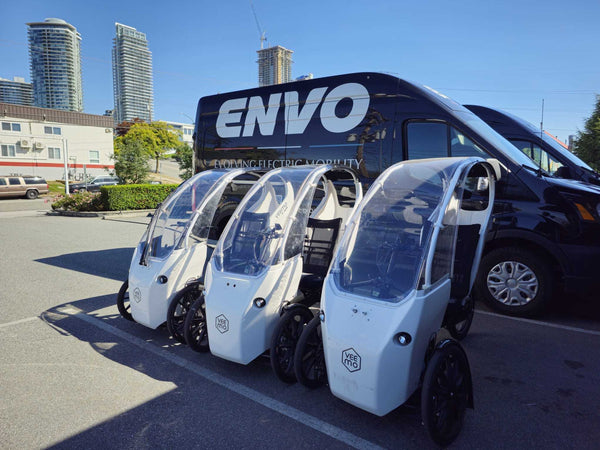My Snow Machine Design Journey:
When I was a little kid my dad built me a wooden toboggan, I couldn’t wait until winter when my dad and I would head to the slopes to ride my sled. It was the love of my life at the time. I felt so much joy sliding down the hill, but climbing back up was a nightmare! I remember thinking to myself, how cool would it be if my sled could climb back up the hill itself using a motor… I was only 7.
When I was 19 I started my mechanical engineering studies. Keen to follow my passion, began I designing the 1st Generation mini snowmobile.


It took more than a year for me to fund the project. I invested in construction steel profiles, a Honda 125cc gas engine, as well as some parts and materials from scrap yards.
The Gen 1 worked fine on paved roads but tested poorly in the snow. It was too heavy and the track and ski system wasn't well engineered.
Throughout the second year of my studies, I had a better understanding of frame design and better skills in forming and welding steel tubes. I had learned enough from the 1st generation to have a better idea of what the configuration of the smallest and lightest snowmobile in the world should look like.


Unfortunately, the Gen 2 only worked when snow was packed and flat and it didn't have enough torque and traction to climb hills. I had created a machine but had not yet fulfilled the childhood dream…

After 3 years of experimentation, a group of university classmates had caught wind of my idea and decided to help me develop a product through a semi-industrial manufacturing process.
It was the same concept as Gen 2, but let's call it Gen 3 since it had a new look and upgrades were made to the engine and transmission. The design and production of this model took another year.


The smallest and lightest mini snowmobile in the world was born at the same time as my Bachelor of Science graduation.

I was happy that the dream had come true. The sled was climbing any hill up on all its own! Lots of fun, especially when we took them out with friends in the back of my 1977 Chevy Blazer. Although the project was a success, as a young engineer, my entrepreneurial passion was not satisfied.
The Electric SnowKart: A Very Canadian Idea:
eBikeBC was becoming a mature business and it was the right time to invest in new ideas through R&D projects:
- The time to rethink personal transportation and its impact on the environment had arrived. We realized that a push towards sustainable (green) all-electric mobility systems is essential.
- Li-Ion battery technology had become safe, reliable, and affordable through its commercialization for electric vehicles and eBikes.
- Canada: 6 months the year 80% of the country covered with snow and ice
These facts all together encouraged us to develop the idea of the first Electric SnowKart by ENVO Drive Systems Inc.
Electric SnowKart 1st Generation:
The 1st Generation ENVO SnowKart was developed based on the platform idea of the gas engine version. It had a fixed welded steel tube frame, 2 tracks in the back with a fixed axle, and one ski on the front. A 3KW rated DC center motor with 2 packs of 72V 20Ah batteries employed with a synchronized belt drive system.
We re-engineered the frame as a part of the chassis design.


The track was made from steel blades and rubber-Kevlar belts all bolted together.
Material selection for sprocket and blade as well as the involute curve design of the sprocket was the engineering challenge of this section. We wanted the sprocket to guarantee the track position, free of slip and excessive noise.
Each track consisted of 48U section stainless steel and 304 bolted on two rubber polyester belts. The sprocket was a hard rubber molded and cured around the aluminum machined hub.

The drive system selected were central BLDC motors, 3000W 72V by QS synchronized belt drive.

To drive the BLDC motor a VOTOL EM-100 was selected. The battery is a custom build pack of 2 72V 16Ah modules used in parallel with LG MH1 3200mAh cells to create 72V 32Ah equal to 2.3KWh.

Assembling:


Final product:

https://www.youtube.com/watch?v=i3-jKvNcTiU
Success Highlights:
- Track traction behaved well on various snow quality
- Steering with rigid axle and 1 front ski
- Cool and desirable performance
- Performance to size targets met

Failure points:
- Balance issues
- Steel blades hazard
- Transmission failure on hills
Things to be optimized for a commercial product:
- Price: due to cost of battery, motor and controller
- Safety
- Weight
- Transmission complexity (reliability enhancement)
- Balance and stability on rough terrains
- Customizability and flexibility of application for various needs







